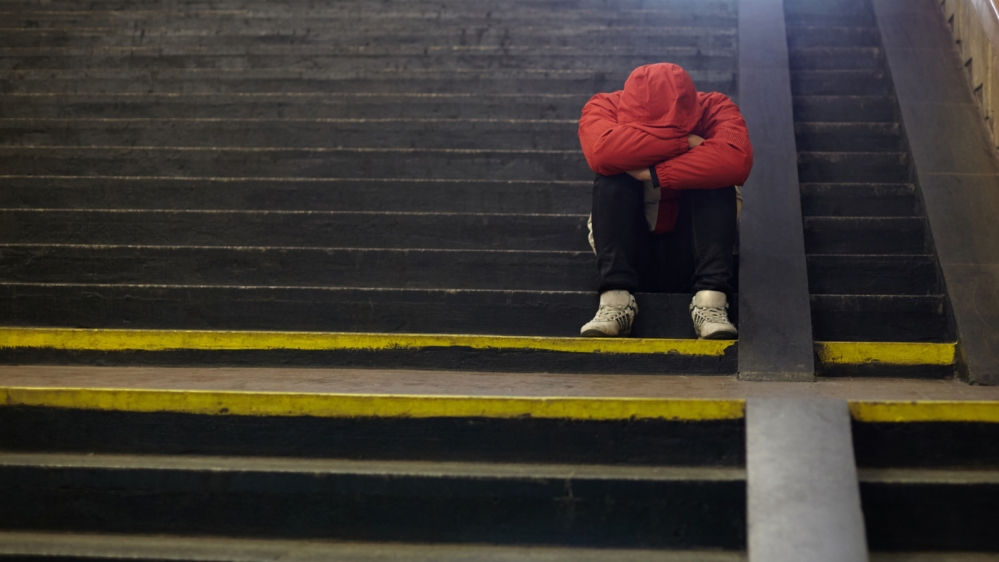The share of young people at risk of poverty or social exclusion has somewhat increased in the European Union due to the COVID-19 pandemic, Eurostat data for the year 2020 reveals.
In early February, Eurostat disclosed its figures on young people between the ages of 15 and 29 at risk of poverty or social exclusion. Results reveal that in the years prior to the pandemic, a positive trend emerged in Europe, with the share of those at risk falling by 3,9 percent between 2015 and 2019. Compared to the 2019 base, the figure for 2020 reflects an increase of 1,1 percent. At EU level, the share of young people at risk of poverty or social exclusion amounted to 25.4 percent in 2020. While the highest levels were recorded in Romania (37,6 percent), Greece (32.8 percent) and Bulgaria (32.3 percent), the lowest shares – and thus the most favorable levels – were registered in the Czech Republic (10.7 percent), Slovenia (12.2 percent) and Slovakia (12.8 percent. Hungary’s level of 18.0 percent places the country among the top third of EU nations.
Outcomes of statistics measuring the number of those at risk of poverty or social exclusion are highly dependent upon the share of young people living with their parents. This partially explains the favorable positions occupied by Slovenia and Slovakia, where this percentage averages at around 80 percent. In Hungary, the proportion of 16-29-year-olds living with their parents is 75,5 percent, which is above the EU average of 67,2 percent and secures the country tenth place in EU rankings (here, Eurostat publishes data for the 16-29-year-old age bracket.)
Eurostat publishes both the share of those at risk of (relative) poverty and the rate of severe material and social deprivation. With regard to detailed findings, we can ascertain that the share of 15-29-year-olds at risk of (relative) poverty was 20.8 percent in the European Union, while the 12.1 percent figure for Hungary is the fifth best in the bloc. At EU level, the rate of severe material and social deprivation in the 15-29-year-old age bracket was 6.5 percent in 2020. Data trends
At EU level, the rare of severe material and social deprivation stood at 6.5 percent among 15-29-year-olds in 2020. Trend data reveals that the share fell from 8.4 percent to 5.4 percent between 2015 and 2019, with the increase in 2020 largely attributed to the pandemic. Hungary’s 9 percent value ranks the country in fifth place. Countries such as Ireland (9.2 percent), Greece (15.7 percent), as well as Bulgaria (21.0 percent) and Romania (24.1 percent) produced worse figures for 2020. Compared to 2019, the largest increase was observed in the case of Ireland, Germany and Romania, while Slovakia and Finland saw the greatest positive change. In the case of Hungary, a difference of roughly 1 percent was registered compared to 2019.
In addition to Eurostat’s complex indicators, it is worth devoting attention to detailed series of data of the large sample youth survey, where young people’s self-identification appears also in connection with material and social positions. Examining subjective classifications on a broader time horizon, the impact of the economic crisis is heavily felt, with the decade since it being sufficient to restore pre-crisis perceptions. In 2004 and even in 2008, over half of young people aligned themselves with the middle social stratum; by 2012, a 10 percent increase in the lower and lower middle strata was observed, parallel to the diminishment of the middle stratum. In 2016, the share of the middle and lower strata was partially restored to pre-crisis levels; by 2020, this realignment was completed.
From another perspective, an increase in satisfaction was registered over the past decade. A spectacularly positive trend is apparent in the assessment of subjective material situation. In 2020, the share of respondents ‘getting along well’ on a budget reached its highest level (57 percent), significantly up from 32 percent in 2012 and 43 percent in 2016, while the share of those living in material hardship was down to 1 percent from 4 percent in 2012, and the share of those experiencing financial difficulties from month to month fell from 15 percent in 2012 to 4 percent in 2020.
The rate of material and social deprivation published by Eurostat measures severe deprivation based on seven variables on the household level and six on the individual level. Household variables include the ability to manage unexpected expenses or replace worn-out furniture, as well as the possibility of accessing a vehicle. In the individual dimension, internet access, regular leisure activity and spending time with friends and family appear in addition to financial means. The COVID-19 pandemic possibly impacted more than one dimension, which are important on their own account. It is important to distinguish whether the pandemic primarily impacted individual or household, and material or social dimensions of deprivation.
Likewise, the most recent series of data of the large sample youth survey are also available from 2020. With view to the above, it may appear surprising that less than half (44 percent) of young Hungarians claimed that the COVID-19 pandemic had an impact on their lives. Among those having felt the effect of the pandemic, most did so in connection with the amount of time spent online (23 percent) and financial conditions (19 percent.) In general, it can be said that most of these reported effects concerning finances, work and studies were rather negative. However, in certain areas a positive impact was observed. Three fields – family relationships, deep family conversations and attachment to God and religion – were identified where the impact was rather positive.
As for socio-demographic characteristics, differences between the group of those feeling and not feeling the impact of COVID-19 are marginal. With regard to sex and age group, no statistically significant difference can be identified. Although there are discrepancies in level of educational attainment – a greater share of those holding at least a high school certificate experienced changes –, this difference is not greatly explanatory. Similarly, perception of the impact of COVID-19 is irrespective of current student status. While labor market activity implies a statistically significant effect, its explanatory power is similarly meagre. The largest differences are apparent according to territorial features: those living in county seats and on the Great Plain were more likely to feel the impact of COVID-19 in their lives. Overall, the analysis of socio-demographic characteristics rather reflects the generally limited impact of the pandemic instead of magnifying groups in which the a more severe impact was observed.
In conclusion, it can be pointed out that the COVID-19 pandemic broke favorable trends both in the European and in the Hungarian perspective. Both Eurostat’s complex indicators and findings of the large sample youth survey unanimously reflect a diminishing risk of poverty and subjective deprivation among Hungarian youth in the years prior to the pandemic. Relatively favorable results are also down to the fact that compared to the European average, a larger share of young Hungarians live with their parents and labor market activity among 15-29-year-olds has increased significantly (by over 15 percent.) While the positive trend was broken by the pandemic, its impact is not universally negative, with young people rather reporting positive changes in family relationships among other areas.
Sources:
Eurostat (2022): Young people - social inclusion
Székely, L. (2021): Magyar fiatalok a koronavírus-járvány idején. Tanulmánykötet a Magyar Ifjúság Kutatás 2020 eredményeiről.


